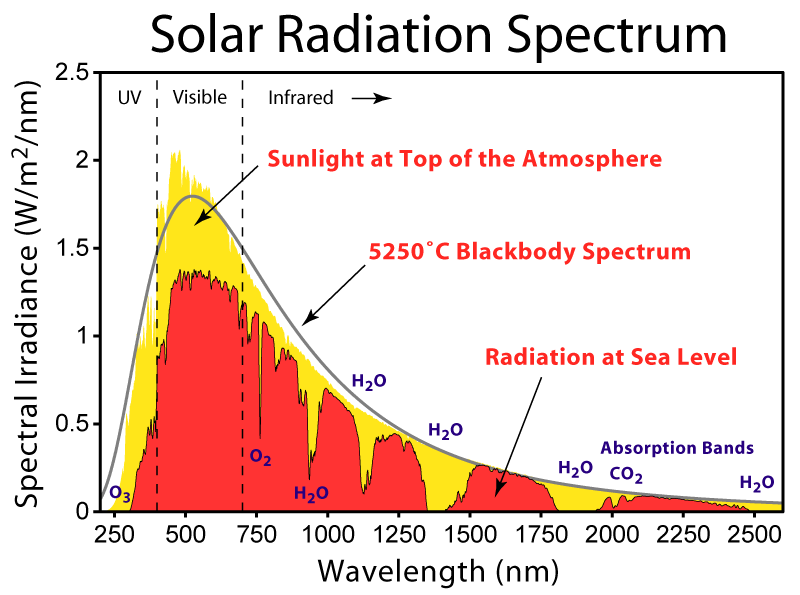Solar Spectrum
The EM radiation from the Sun is a close match to that of a 5250 °C black body.
EM radiation from the Sun based on the ASTM Terrestrial Reference Spectra. Normally, BB radiation only comes from solids. This has led some to believe that there must be a solid under the plasma in the photosphere that is giving off this radiation. But this begs the question of why we're not seeing a strong echo from such a solid in helioseismic data.The other possibility is that compressed plasma might be able to give off BB radiation.1 The thinking is that the Coulomb forces in compressed matter can mimic the covalent bonds in solid matter, resulting in similar frequences of vibration. In other words, all matter at any given temperature above absolute zero has atomic motion, and the moving electric charges send out EM waves. The frequency of these waves is a function of the temperature, where hotter matter moves faster, and therefore generates higher-frequences waves. Since the frequencies in question are way beyond the simple translational velocities, the vibrating atoms have to be constrained. In a solid, they would be constrained by the covalent bonds. But in an ionized plasma, the contraint might simply be the Coulomb forces.This, of course, would explain 5250 °C black bodies in the first place. There are only 3 elements (i.e., tantalum, tungsten, and rhenium, all in the 6th period), that are still solid at that temperature, and these are virtually non-existent near the surface of the Sun.
References
1. Tsintsadze, L. N.; Callebaut, D. K.; Tsintsadze, N. L. (1996): Black-body radiation in plasmas. Journal of Plasma Physics, 55: 407-413 ⇧











